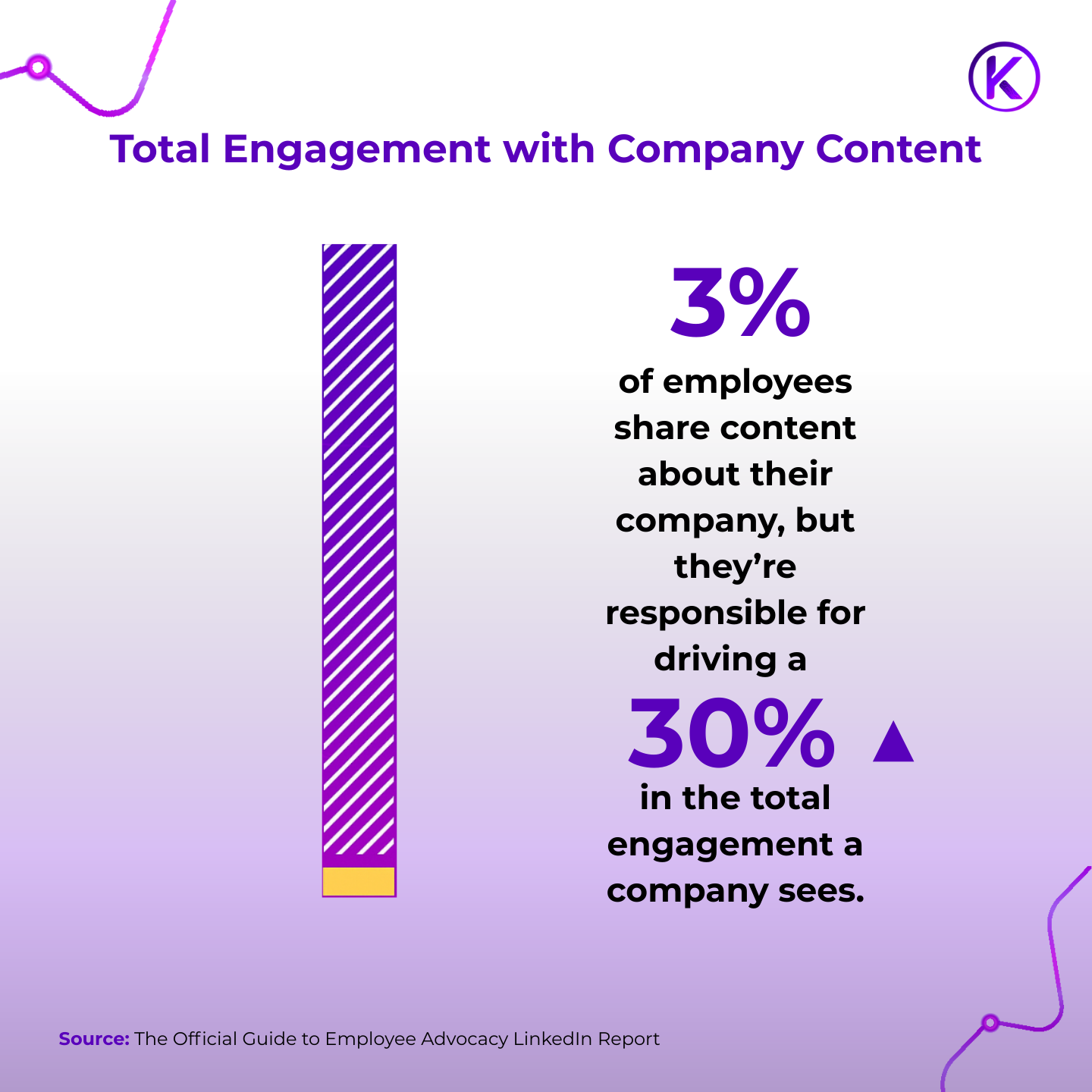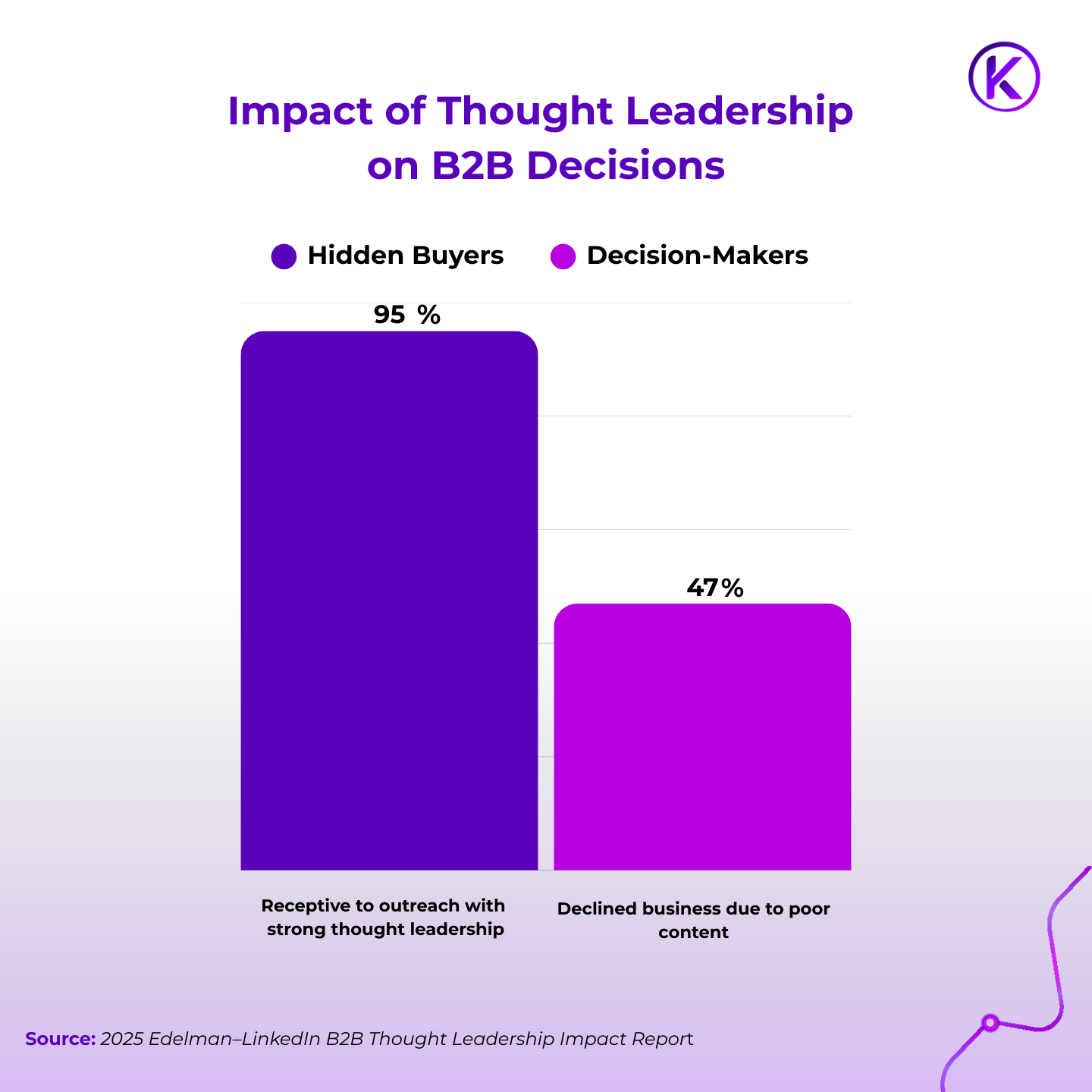LinkedIn has evolved far beyond a digital résumé. It is now the most visible stage where reputations are shaped, authority is measured, and opportunities are unlocked. According to The Official Guide to Employee Advocacy LinkedIn Report, employee networks often reach much further than company pages, and content shared by individuals is perceived as more authentic, driving higher engagement and visibility.

Visibility alone is not enough. It creates real value only when paired with trust. The Edelman Trust Barometer confirms that trusted leaders strengthen stakeholder confidence and improve business performance, making leadership presence a strategic necessity.
The role of thought leadership on LinkedIn
Thought leadership is not about posting frequently but about shaping conversations that matter. It requires strategy to ensure ideas are consistent, credible, and aligned with business goals.
On LinkedIn, this translates into three essentials:
- A complete and compelling profile that signals credibility
- Regular publication of valuable insights that build authority
- Authentic engagement that strengthens employer branding, attracts talent, and deepens relationships with stakeholders
The 2025 Edelman–LinkedIn B2B Thought Leadership Impact Report reinforces why this matters. It shows that 95 percent of hidden buyers such as finance, legal, and procurement professionals are more receptive to outreach from executives who publish strong thought leadership. At the same time, 47 percent of decision-makers have declined to award business because the content they saw did not meet expectations. Quality thought leadership can open doors, while poor execution can just as easily close them.

The pain points executives face on LinkedIn
In our work with senior leaders, we often hear about five common barriers that hold them back from building a consistent presence:
- Lack of time to manage LinkedIn activity alongside other responsibilities
- Concerns about reputational risk
- Difficulty translating ideas into clear and engaging messages
- Limited understanding of how LinkedIn works and what drives visibility
- Doubts about LinkedIn’s ability to enhance reputation or business performance
For those already active, the challenges often shift toward:
- Publishing without a clear strategy, leading to inconsistent impact
- Relying too heavily on AI tools, which can produce polished content that lacks authenticity
- Struggling to simplify technical statements into clear messages without losing authority
- Underusing features such as newsletters or articles that showcase thought leadership
- Uncertainty about interpreting LinkedIn KPIs, leaving impact unclear
Why strategy matters
Occasional posting is not enough. Without strategy, executives blend into the noise. With strategy, three things happen:
- Messages remain consistent and aligned with business objectives
- Engagement is amplified through employee networks and LinkedIn’s algorithm
- Content builds authority that shapes decisions and strengthens trust
A clear strategy also reduces barriers to publishing. It saves time with calendars and content frameworks, mitigates reputational risk by defining tone, helps executives express ideas with clarity, explains how visibility is built on LinkedIn, and introduces KPIs that prove impact.
The appetite for thought leadership is growing rapidly. ColumnContent reports that 58 percent of decision-makers now spend at least an hour each week consuming it, a sharp increase since the pandemic. This is precisely why strategy matters more than ever.
The KINAI LIFT Methodology
At KINAI we help leaders build authenticity by guiding them to articulate their perspective, define their style, and connect consistently with audiences. We provide the structure and analysis that make this possible, while ensuring the authenticity remains theirs.
To achieve this, we designed the KINAI LIFT Methodology, a framework that transforms LinkedIn from a posting task into a pathway to visibility, authority, and measurable influence.
Listen
We begin with a comprehensive audit of the executive’s profile, activity, and audience resonance. This reveals how their presence is perceived by peers, hidden buyers, and stakeholders in business, policy, or multilateral spaces.
Interpret
We translate insights into strategy. This means defining positioning, content pillars, and tone of voice, while mapping industry conversations to identify where the executive can credibly lead.
Frame
We turn strategy into narrative. Through editorial calendars, AI-supported ideation, and one-to-one coaching, we create content that helps executives publish authentic insights, challenge assumptions, spark dialogue, and resonate with their audiences.
Track
We go beyond vanity metrics. KINAI designs tailored KPIs that matter both for the organisation and for the personal brand of the executive. We measure trust, reputation, influence on decision-making, and advocacy from hidden buyers, ensuring that LinkedIn activity translates into meaningful outcomes.
With the LIFT Methodology, LinkedIn stops being a chore and becomes a lever for reputation, influence, and growth.
A win for executives and organisations
The Edelman–LinkedIn 2025 B2B Thought Leadership Impact Report also shows that 79 percent of hidden decision-makers are more likely to champion proposals from companies whose executives publish high-quality thought leadership.
This proves that executive visibility is not just a personal advantage but a corporate growth strategy. Companies that invest in the presence of their leadership teams are investing in reputation, trust, and long-term competitiveness.
Leaders who build a credible presence on LinkedIn open doors to influence, partnerships, and growth. For executives, the opportunity is clear. For organisations, the message is urgent. Thought leadership is no longer optional. It is a shared strategy for growth.
If you are ready to explore how this approach can work for you, connect with us to design your thought leadership strategy on LinkedIn.
